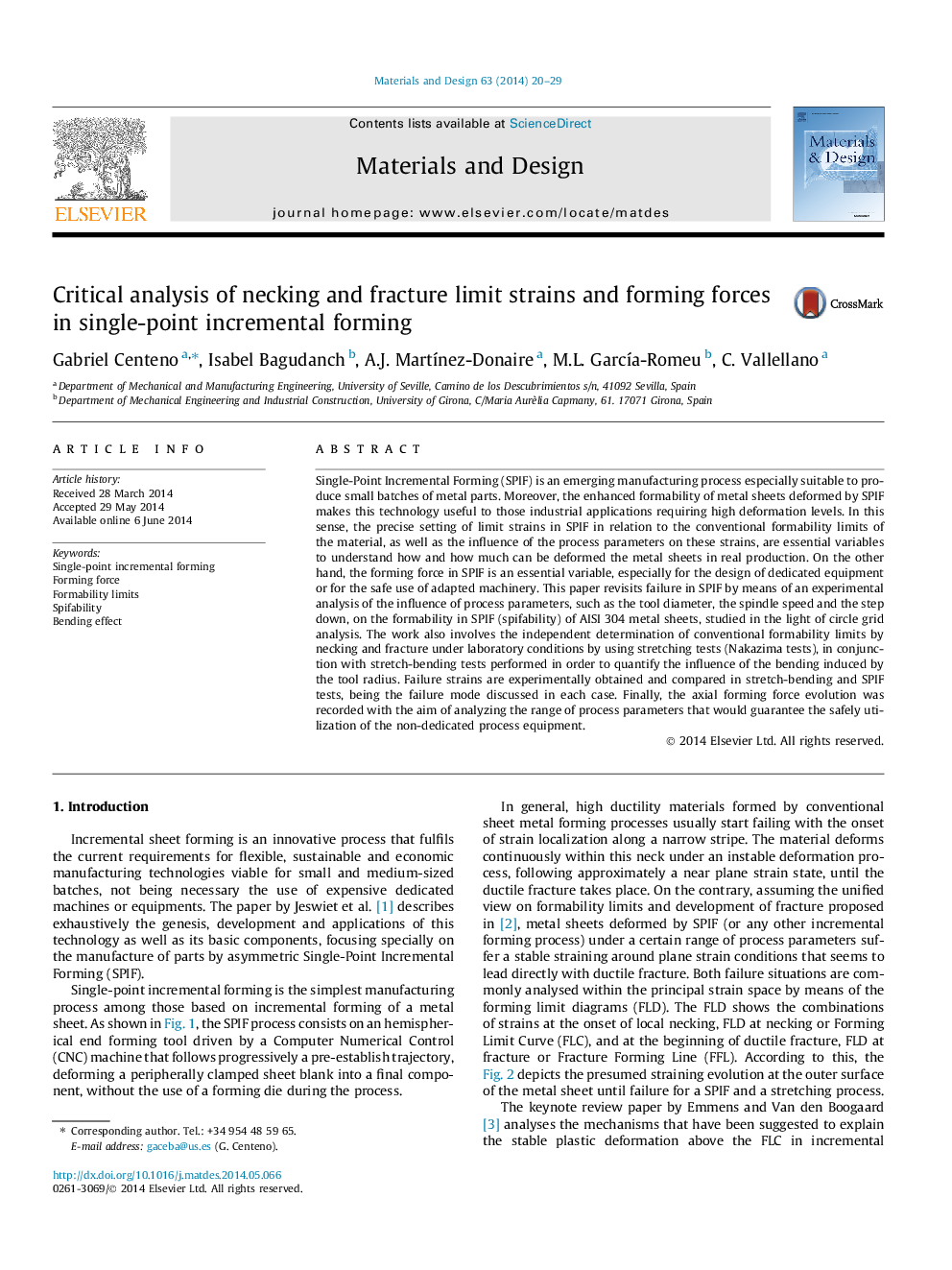| Article ID | Journal | Published Year | Pages | File Type |
|---|---|---|---|---|
| 828974 | Materials & Design (1980-2015) | 2014 | 10 Pages |
•Formability and failure of AISI 304 sheets were studied different bending conditions.•The failure mode detected was a postponed necking followed by ductile fracture.•Formability above the FLC in SPIF is much higher than in stretch-bending.•Fracture strains in SPIF are placed above the conventional FFL (Nakazima).•The spindle rotation plays an important role decreasing the vertical forming force.
Single-Point Incremental Forming (SPIF) is an emerging manufacturing process especially suitable to produce small batches of metal parts. Moreover, the enhanced formability of metal sheets deformed by SPIF makes this technology useful to those industrial applications requiring high deformation levels. In this sense, the precise setting of limit strains in SPIF in relation to the conventional formability limits of the material, as well as the influence of the process parameters on these strains, are essential variables to understand how and how much can be deformed the metal sheets in real production. On the other hand, the forming force in SPIF is an essential variable, especially for the design of dedicated equipment or for the safe use of adapted machinery. This paper revisits failure in SPIF by means of an experimental analysis of the influence of process parameters, such as the tool diameter, the spindle speed and the step down, on the formability in SPIF (spifability) of AISI 304 metal sheets, studied in the light of circle grid analysis. The work also involves the independent determination of conventional formability limits by necking and fracture under laboratory conditions by using stretching tests (Nakazima tests), in conjunction with stretch-bending tests performed in order to quantify the influence of the bending induced by the tool radius. Failure strains are experimentally obtained and compared in stretch-bending and SPIF tests, being the failure mode discussed in each case. Finally, the axial forming force evolution was recorded with the aim of analyzing the range of process parameters that would guarantee the safely utilization of the non-dedicated process equipment.
